 4 Columns
4 Columns
Gone ramblin’: our final summer missive maps a route through works inspired by an ethos of my way and the highway.
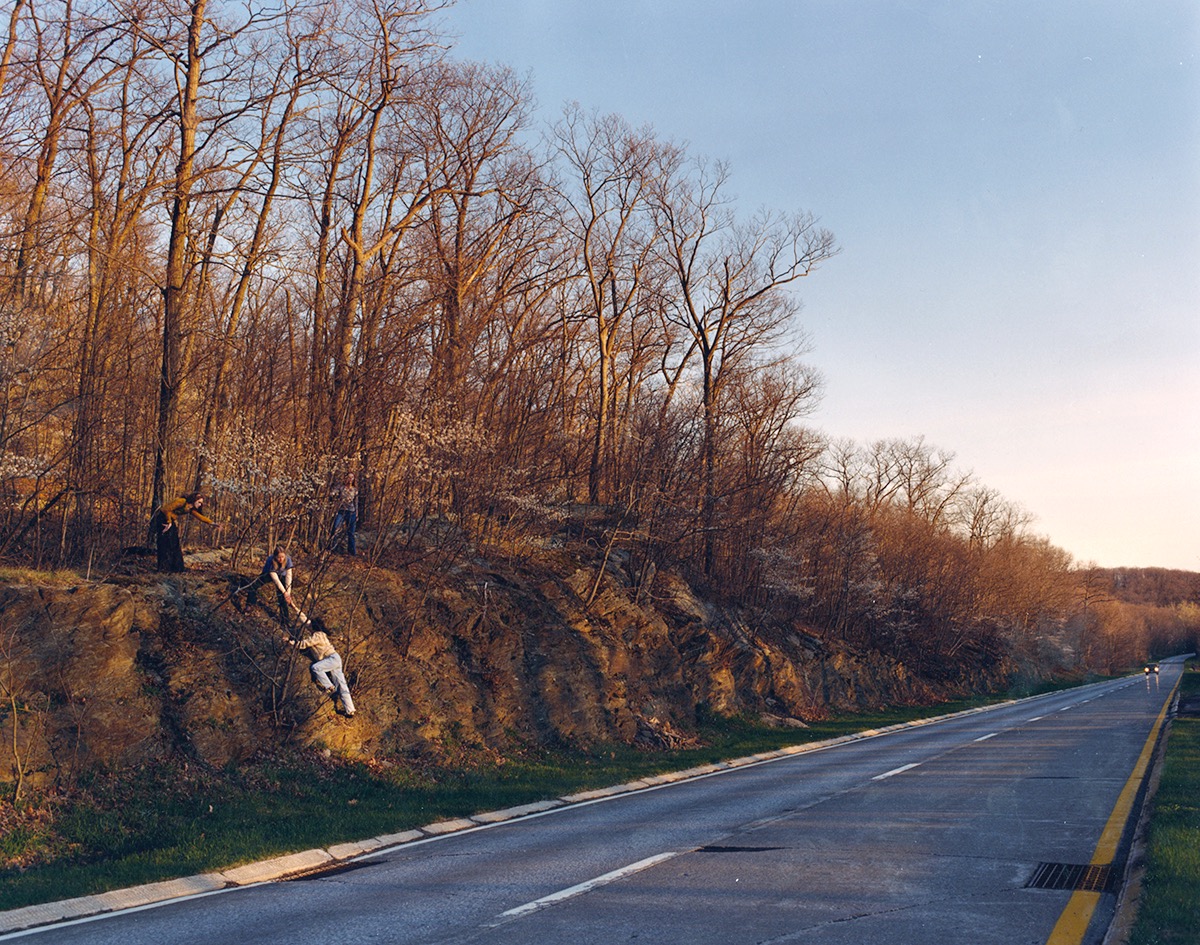
Justine Kurland, The Sirens, 1999. C-print, 11 × 14 inches. © Justine Kurland. Image courtesy the artist and Mitchell-Innes & Nash.
The open road—with its evocations of burning asphalt and wind-whipped hair, escape from work and from law, freedom and recklessness, Thelma and Louise, Bonnie and Clyde—beckons to the 4Columns editors one last time as August closes upon us, before autumnal realities arrive. The magazine’s archives offer many on-ramps to gasoline-scented liberation, so for our final missive of the summer (stay tuned for next week’s fall 2023 preview, in advance of our first issue back from hiatus, out September 8), we offer a brief caravan of reviews that sing: life is a highway, I wanna ride it, all night loooong.
• • •
JOHANNA FATEMAN ON JUSTINE KURLAND
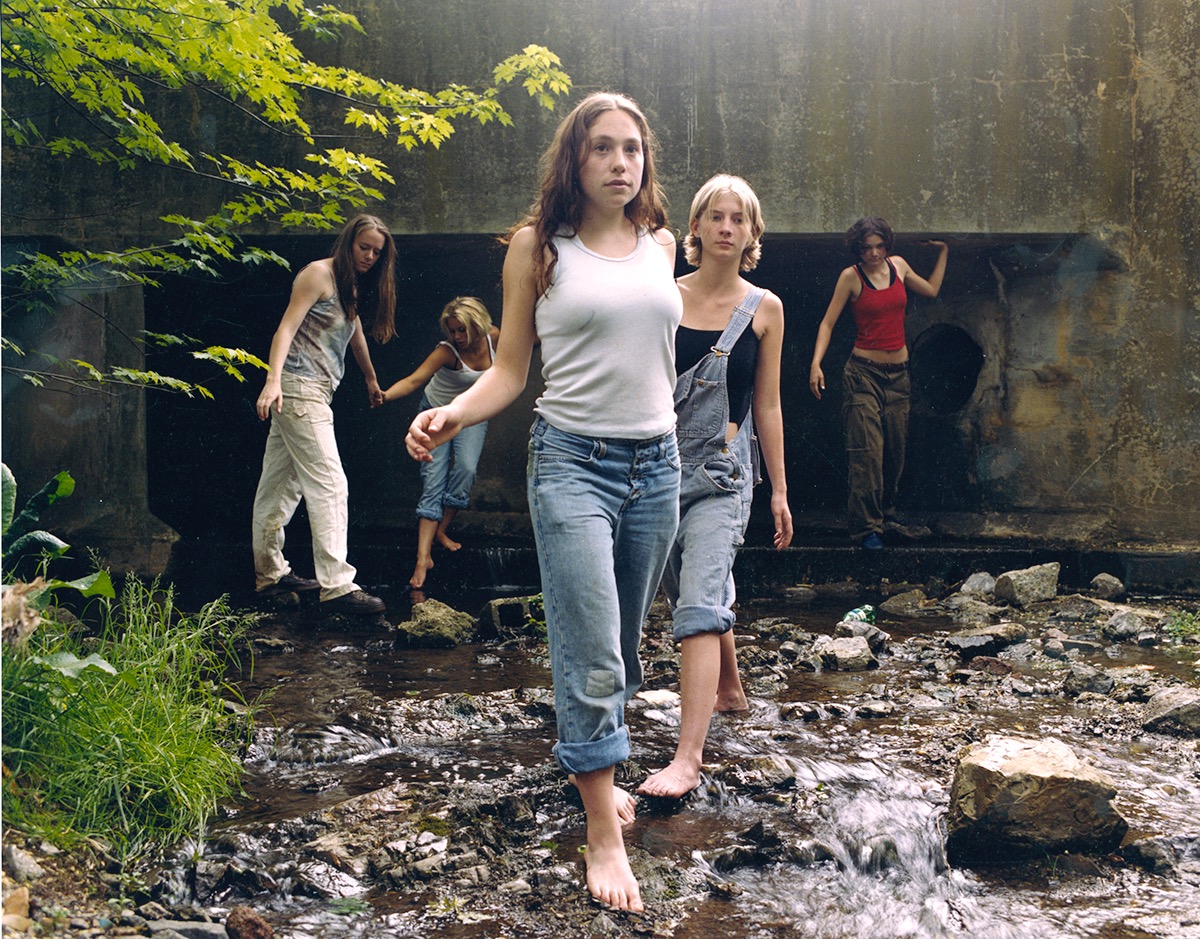
Justine Kurland, The Wall, 2000. C-print, 11 × 14 inches. © Justine Kurland. Image courtesy the artist and Mitchell-Innes & Nash.
The open road is an invitation to feral lawlessness in Girl Pictures, an intimate series of sixty-nine transfixing photographs of teens on the run by Justine Kurland, as described by Johanna Fateman in her 2018 review of an exhibition of the artist at Mitchell-Innes & Nash. “Meadows, creeks, swamps, desert vistas, and a burning forest are among the dramatic backdrops Kurland found as she began road-tripping across the country in 1997, following the westward path of brutal American expansion, enlisting local girls to stake their own claim, to transpose new adventures on the landscape. In these images, nature is not often pristine—fences, overpasses, and power lines underscore the runaways’ dangerous proximity to what they’ve fled.”
• • •
GEETA DAYAL ON DEBEN BHATTACHARYA
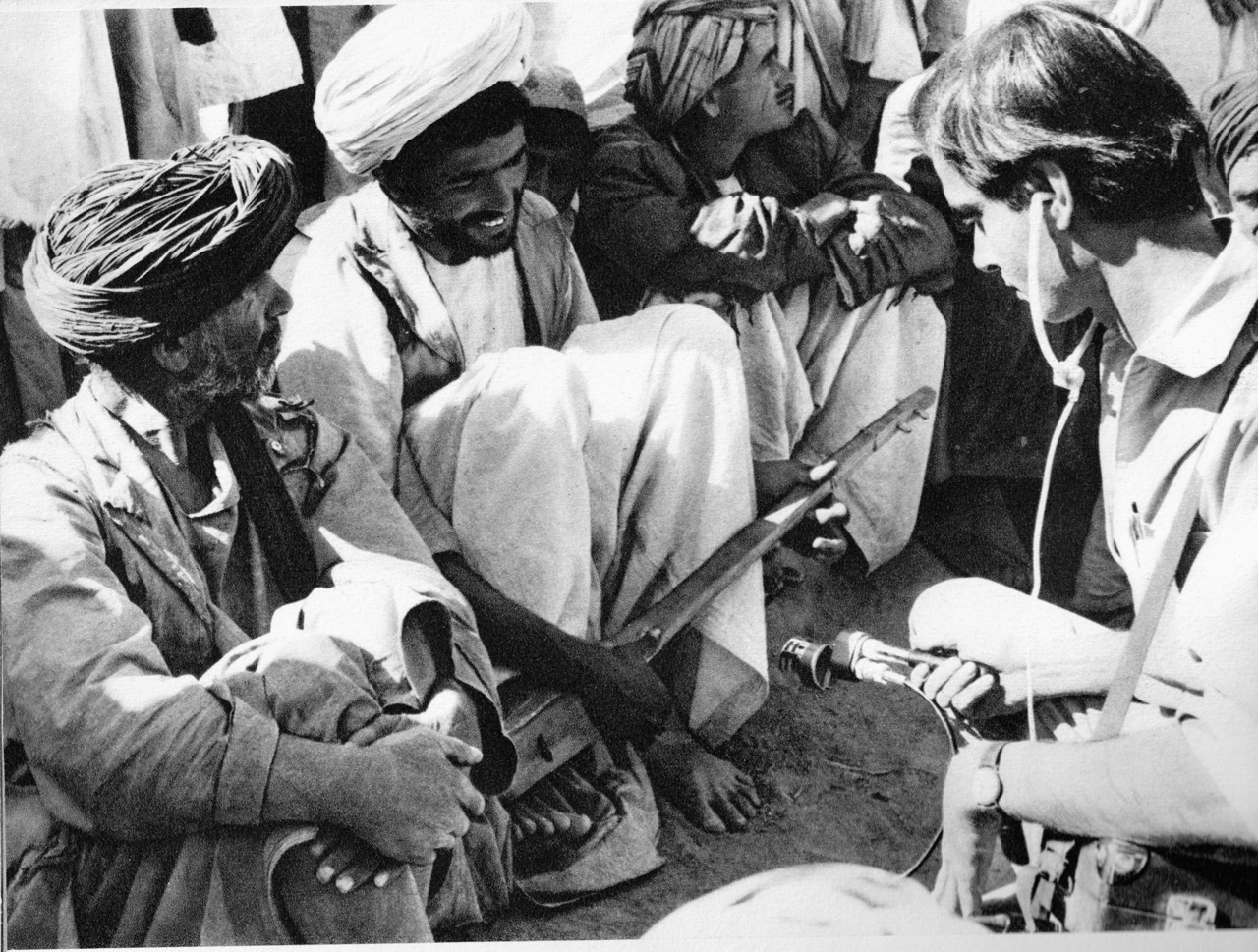
Deben Bhattacharya recording in Afghanistan, 1955. From Paris to Calcutta: Men and Music on the Desert Road.
In Geeta Dayal’s 2018 essay of an awesome project by radio producer Deben Bhattacharya, the highway opens onto a heady, intoxicating mix of diverse cultures that inspire new artistic forms. “In 1955,” she writes, “Bhattacharya traveled from France to India in a converted milk van with the goal of making field recordings. His friend Colin Glennie did the driving for the epic twelve thousand–mile road trip, motivated by the possibility of meeting the master architect Le Corbusier, who was then in Chandigarh. . . . [the 2018 album] Paris to Calcutta includes four CDs of field recordings, along with Bhattacharya’s detailed diary of his travels and numerous scans of his elaborate typewritten notes. Dozens of his striking black-and-white photographs fill out the volume—including images of a Bedouin camp, musicians in Tehran, and street singers in Bombay.”
• • •
MEGAN MILKS ON CENSUS
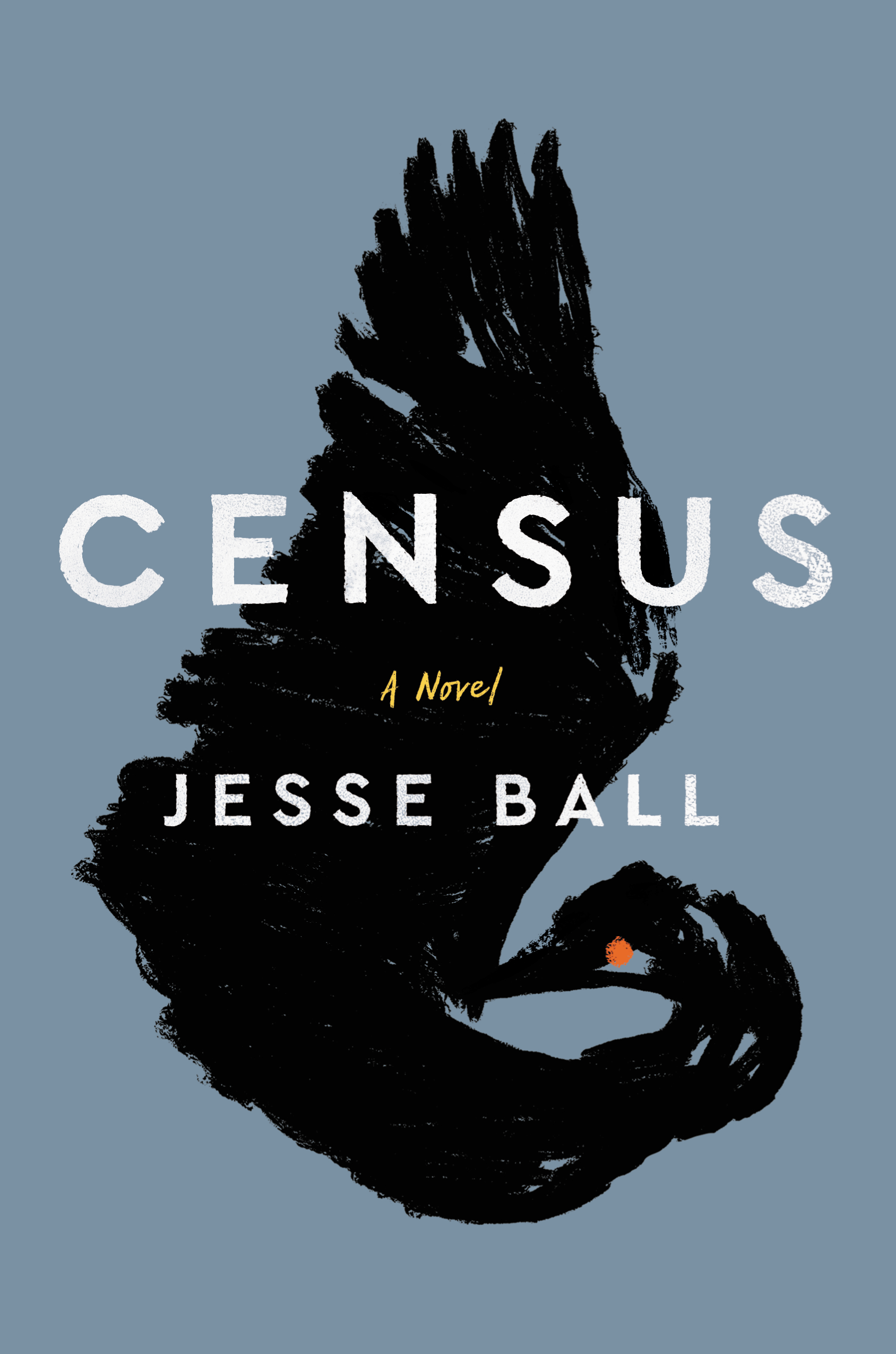
There’s also another kind of road-trip motif, of course: the one that’s a stand-in for life itself, with its loneliness, melancholy dead-ends, departures and definitive endings. Such is the case in Jesse Ball’s 2018 novel Census, reviewed for 4Columns by Megan Milks. “Census follows a father and adult son (both unnamed) as they ‘take to the road’ one last time: the father, our narrator, is dying, and he has accepted a new job as census taker as an excuse to go on a final journey with his son. His hope is to survive the trip, though he doesn’t believe he will—and he dreads leaving behind his son, who has Down syndrome, to be cared for by someone else. The novel advances in episodes as our narrator chronicles his journey from Village A to Village Z, braiding together his encounters with villagers with memories from his past.”
• • •
JENNIFER KABAT ON A LINE IN THE WORLD
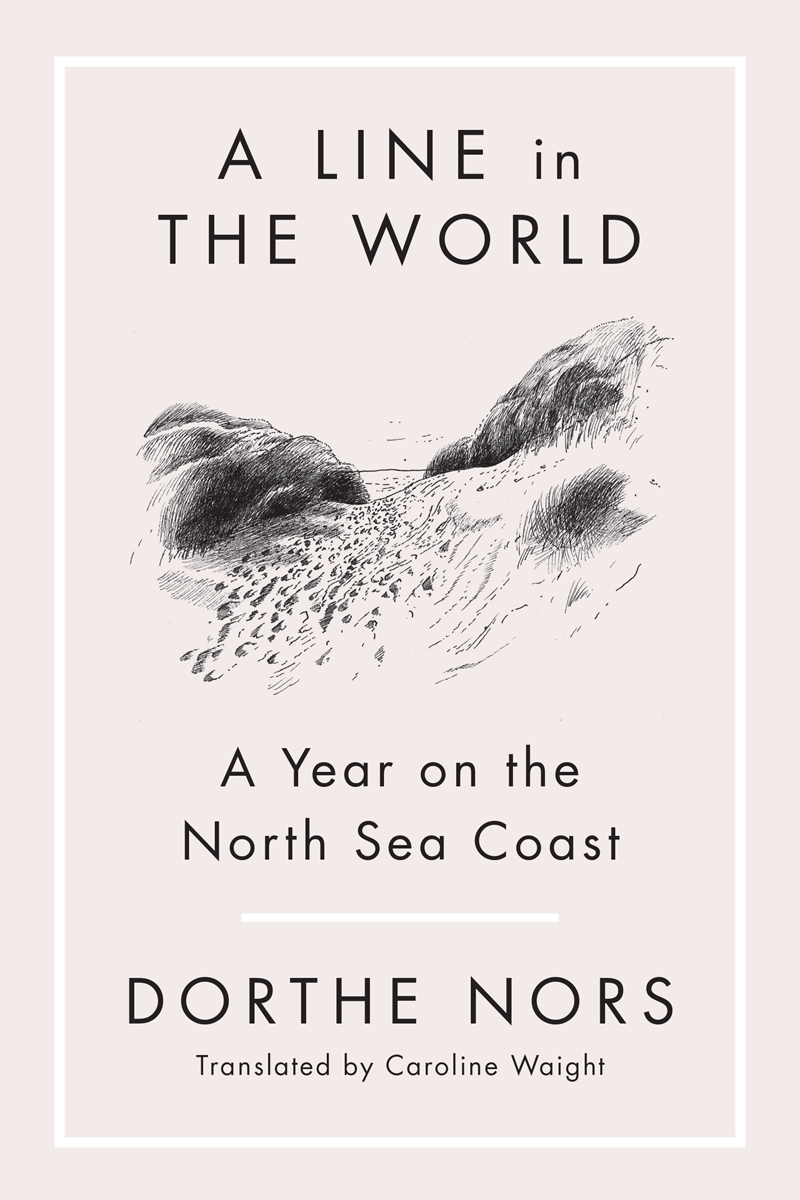
As much as travel can be about going away, leaving all that’s familiar in the dust, it is also ultimately about finding something—whether finding your way back home, or finding that sense of home that exists already within the self. We conclude our road-trip reading list with a work of nonfiction—the first by Danish writer Dorthe Nors, reviewed for 4Columns last year by Jennifer Kabat—that is precisely about this kind of finding. In A Line in the World, Kabat writes, Nors “travels six hundred miles of the North Sea coast in her old Toyota with her parents’ stained road atlas. The book and its themes make me think of a tiny saffron salamander, the red eft, that lives on my land, and that creature’s deep sense of place. The other side of being lost isn’t just knowing where you’re going, but rather knowing somewhere that’s held inside yourself. This eft, the juvenile form of the Eastern newt, has an ineffable, improbable sense of home. It wanders miles and miles into damp forests only to return one rainy spring night to its home pond. The eft contains, scientists speculate, a small bit of iron, like an inner compass. Nors writes of such peregrinations, like the migration routes of birds. They too, it turns out, have an inner compass, and this subliminal sense of home is Nors’s subject.”